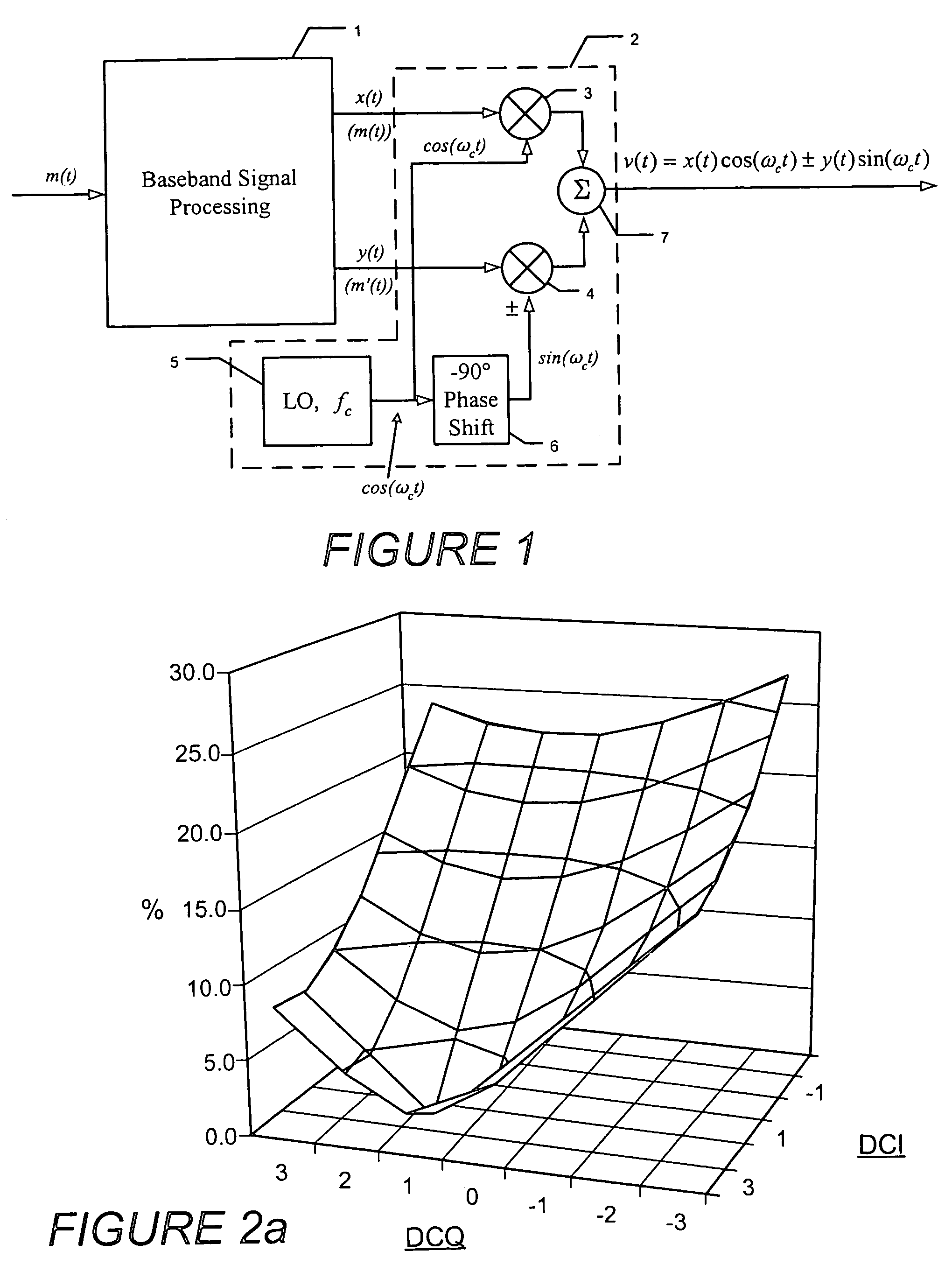Fast calibration of electronic components
a technology of electronic components and fast calibration, applied in the direction of instruments, transmission monitoring, baseband system details, etc., can solve the problems of unwanted signal interference, information loss, signal fidelity degradation,
- Summary
- Abstract
- Description
- Claims
- Application Information
AI Technical Summary
Benefits of technology
Problems solved by technology
Method used
Image
Examples
Embodiment Construction
[0035]These and other aspects of the invention will now be described in greater detail in connection with exemplary embodiments that are illustrated in the accompanying drawings.
[0036]One problem with conventional methods of calibration is that the number of measurements needed to find a required DC-offset compensation setting often exceeds an acceptable number of attempted measurements. One conventional method also involves making at least 9 measurements for a 7×7 grid before it can be determined that a device cannot be calibrated within a range of possible DC compensation settings. However, as the size of the grid is increased, so too is the number of possible settings. Hence, when using the above conventional method an increase in grid size would require a corresponding increase in the number of measurements needed before a determination can be made that a device cannot be calibrated. Even in the case of calibrating in only one dimension, the above conventional method for a 7×7 g...
PUM
 Login to View More
Login to View More Abstract
Description
Claims
Application Information
 Login to View More
Login to View More - R&D
- Intellectual Property
- Life Sciences
- Materials
- Tech Scout
- Unparalleled Data Quality
- Higher Quality Content
- 60% Fewer Hallucinations
Browse by: Latest US Patents, China's latest patents, Technical Efficacy Thesaurus, Application Domain, Technology Topic, Popular Technical Reports.
© 2025 PatSnap. All rights reserved.Legal|Privacy policy|Modern Slavery Act Transparency Statement|Sitemap|About US| Contact US: help@patsnap.com



